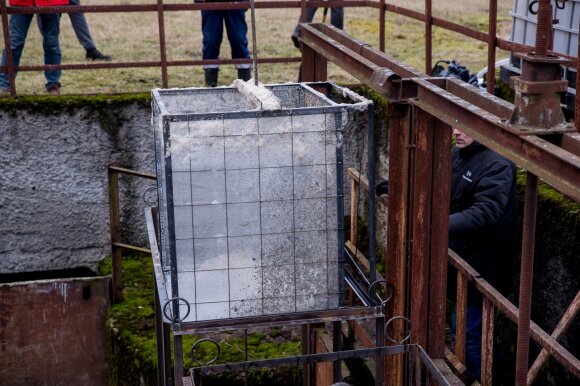
[ad_1]
“Research shows that heavy metals are found in wastewater. Water treatment plants are not capable of cleaning everything, not even the smallest metal particles, so consumers must act responsibly and not anticipate that “it is not my business, someone will clean it.” With such behavior we harm not only the environment, but, first of all, ourselves ”, says Aurelija Baronienė, director of the Vilnius Water Laboratory.
According to her, cleaning heavy metals from wastewater is a complex, expensive and not always successful task. Heavy metals accumulate in the sludge left over from the wastewater treatment process, making the sludge unsuitable for secondary use, such as fertilizing food or energy crops. Therefore, such sludge must be incinerated.
Metals found in wastewater include copper, zinc, nickel, chromium, lead, cadmium, and aluminum. All are more or less toxic.
Heavy metals are the most dangerous pollutants in terms of their rate of spread and increasing concentration in the environment, says A. Baronienė. When released into the environment, these pollutants enter the metabolic cycle, accumulate in food chains, become toxic, and alter the physiological functions of organisms. Heavy metals do not decompose, they accumulate at the bottom of rivers, in plants, insects and fish, which we then eat ourselves. Larger amounts of these metals become toxic to both animals and humans.
“The only way to reduce environmental poisoning with these substances is through responsibility. It is necessary for companies to carry out production in a more responsible way, control all their processes and dispose of waste in an orderly manner, and replace hazardous substances with others less dangerous or not dangerous in production ”, says A. Baronienė.
According to the representative of Vilniaus Vandenai, the behavior of all consumers is no less important: paying attention to the composition of purchased products, such as cleaners and fertilizers, and using them responsibly in moderation, we could reduce the amount of chemicals dumped into the sewer and spills to the ground. Heavy metals are released and deposited in the environment during combustion, so domestic consumers must manage their waste responsibly, for example by not arbitrarily burning hazardous substances.
From copper to cadmium
Although copper, which is well known to many, is a vital trace mineral, when it reaches high concentrations, it becomes a harmful substance for the human body. Its excess can negatively affect the central nervous system, some internal organs. Most of these materials are released into the environment by the metal industry, fuel and waste incineration, transportation, fertilizers.

Elevated levels of zinc are also harmful to the human body. Zinc enters the environment by burning coal, oil, gasoline, waste, as well as using tire particles, phosphate fertilizers. The amount of zinc in food can increase if we prepare food on galvanized surfaces or use tools or utensils coated with this material.
Meanwhile, increased levels of nickel impair metabolism and other health problems. About 57 percent. nickel enters the environment, including wastewater, with diesel fuel. It is also excreted in the incineration of waste, phosphate fertilizers and batteries. Nickel is widely used in the manufacture of kitchen equipment, nickel-plated products, batteries.
Chromium is a carcinogenic element that accumulates in food in both humans and animals. Higher amounts of this substance cause diseases of the internal organs and the skin, severely allergic. Most of these substances are released into the environment through energy, metal, transportation, the leather industry, detergents, and phosphate fertilizers. Chromium is also present in paints.
Elevated levels of lead compounds can damage blood circulation, inhibit enzyme activity, and cause other health problems. The transportation industry is the one that emits more gasoline than consumes lead. We can find lead in our daily lives by eating foods from cans that use this metal for their seams.
Finally, cadmium is also detected in wastewater. It is a highly toxic metal with carcinogenic and mutagenic effects. It enters the environment with fossil fuel combustion products, phosphorous fertilizers, pesticides, tobacco smoke, car tire dust, recycling and metal melting.
No part of this publication may be reproduced without the written permission of ELTA.
[ad_2]